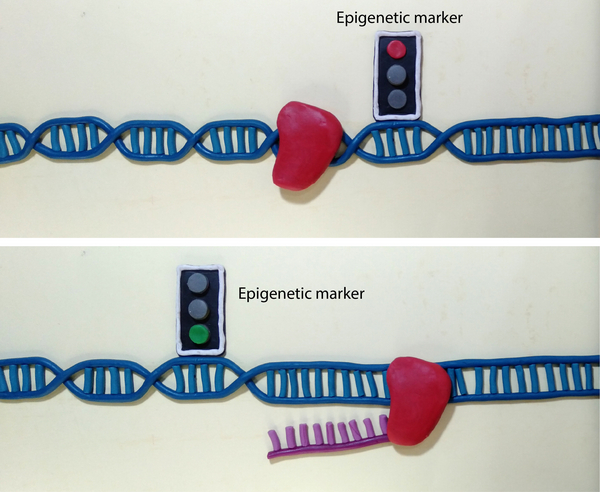Hallmark of ageing: Epigenetic changes
Epigenetic markers control gene activity
The blueprints for all the proteins that keep our cells running are stored in the DNA. To make the DNA fit in the cell nucleus, it is wrapped around histone proteins, which gives it structure and makes it more compact. Tightly packed genes are generally not active. In areas where the DNA is only loosely packed however, the genes can be activated and the corresponding proteins can be produced.
Different cell types have different genes activated – for instance, some genes are only active in nerve cells and give them their characteristic properties. Other genes are active in skin cells, while others are mainly active in muscle or bone cells. The active genes determine what kind of cell it is and what it can do.
The switching on and off of genes is controlled by attaching or removing epigenetic markers. These are small chemical groups (such as methyl groups) that can be attached either to the DNA itself or to the histones on which the DNA is packaged. These markers control whether the DNA is tightly packaged or easily accessible.

The epigenetic clock measures our biological age
With increasing age, these markers, which are so important for the function of cells, change (Figure 3). These changes can occur because of our environment (e.g. diet, exercise, smoking), mistakes our cells make in maintaining them, or simply random chance. As a result, genes that should be silenced may become active again or important proteins are no longer produced. The affected cells then lack components for important processes, without which they can no longer function properly. These changes can also contribute to ageing.
Researchers can use these epigenetic changes as a measure of how well our bodies are functioning. Scientists refer to this as our biological age. This can differ significantly from our chronological age, i.e. the time since our date of birth.
The "epigenetic clock" specifically measures places in our DNA where methyl groups are known to change in a predictable pattern with age. By comparing an individual’s methyl groups with the average pattern of methyl groups in people of various ages, researchers can determine their biological age - a good indication of whether someone is ageing faster or slower than usual.
Biological ageing can be accelerated or slowed down
Epigenetic clocks are already being used in anti-ageing studies. They can be used to measure how effective a tested treatment is at slowing down or reversing ageing. The development of epigenetic clocks has shown for the first time that our biological age can be changed.

